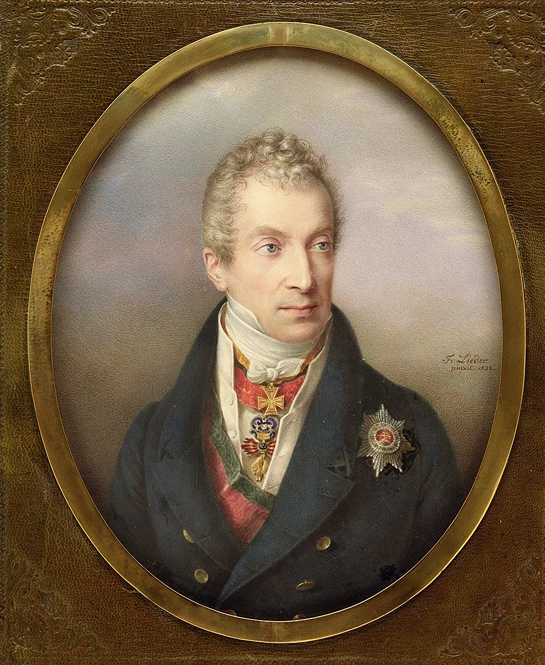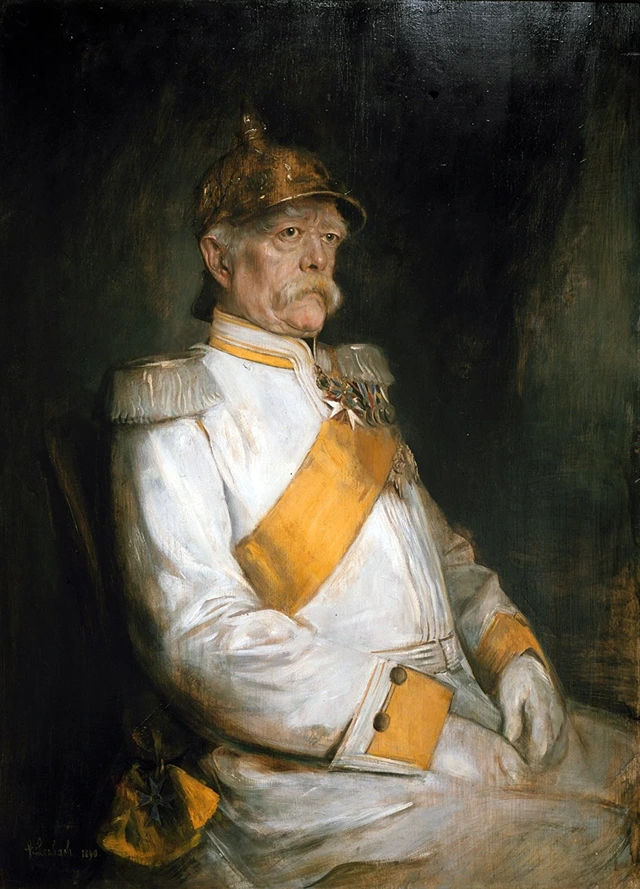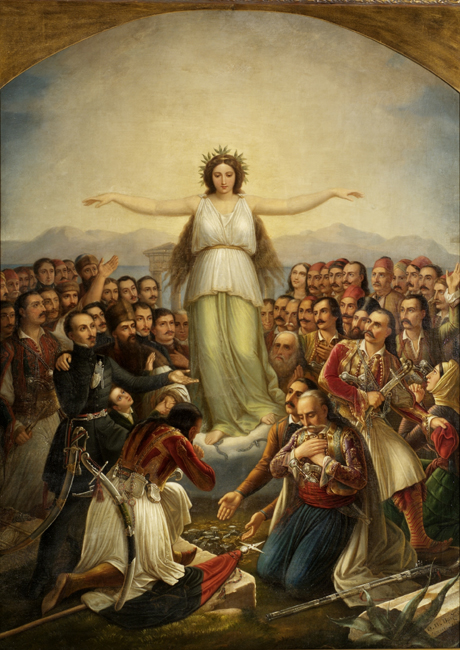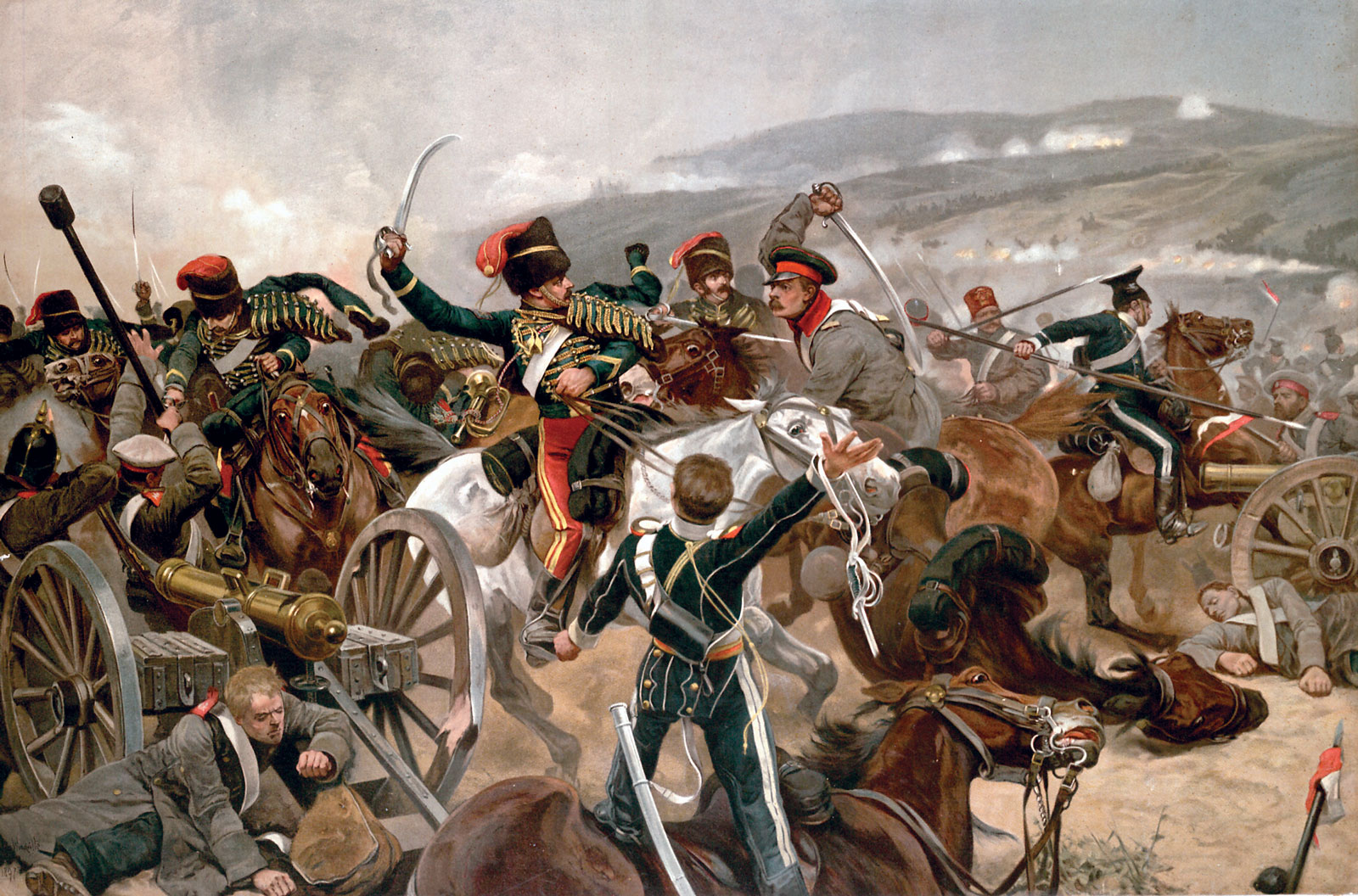Concert of Europe: Countries
At first, the Concert of Europe comprised key European powers: Prussia, France, Britain, Russia, and Austria.
Some of the members of the Concert of Europe maintained their alliances, such as the Holy Alliance between Prussia, Austria, and Russia.
Many events affected the balance of power on the continent. Some of them were independence movements, such as the ones in Greece and Belgium. The respective unification of Italy and that of Germany—completed in 1871—redrew the map of Europe and made an impact.
The Holy Alliance
The Holy Alliance comprised Austria, Prussia, and Russia. These were three conservative monarchies that sought to maintain the status quo and challenge secularist and liberal movements. The alliance lasted for several decades until the Crimean War (1853-1856). It was restarted in the 1870s by German Chancellor Otto von Bismarck. However, there were additional disagreements between Austria-Hungary (1867-1918) and Russia in the latter part of the 19th century.
Concert of Europe: Purpose
The primary purpose of the Concert of Europe was to maintain peace on the continent after the Napoleonic Wars (1803-1815). The Concert was initially implemented after the Congress of Vienna (1814-1815). It was also called the Congress System because European leaders periodically met to discuss international relations. These congresses were designed to prevent war. The Congress System also sought to prevent the rise of nationalism and liberal reforms in their respective countries.
Concert of Europe: Personalities
Several monarchs and highly positioned statesmen were involved in the Concert of Europe. The two most influential leaders were Prince Klemens von Metternich and Otto von Bismarck.
Prince Klemens von Metternich
Prince Klemens von Metternich (1773-1859) served as the Foreign Minister (1809-1848) and the Chancellor (1821-1848) of Austria. He exerted considerable influence on European international relations and was respected as a diplomat.

Fig. 1 - A portrait of Prince Klemens Wenzel Lothar von Metternich, by Friedrich Johann Gottlieb Lieder, 1822. Source: Wikipedia Commons (public domain).
The Austrian statesman advocated a European balance of power throughout his political tenure. One of his most important contributions was creating a postwar agreement after Napoleon’s defeat. This agreement was known as the Congress of Vienna (1814-1815). Metternich worked to maintain peace in Europe by holding a series of European congresses, such as those at Aachen, Troppau, and St. Petersburg.
Otto von Bismarck
Otto von Bismarck was Germany's first Chancellor after that country's 1871 unification. Like Metternich, Bismarck was one of the most influential statesmen of the 19th century. In light of Germany's new role, Bismarck preferred to return to the Concert of Europe to maintain the new balance of power that the German unification accomplished. Germany was arguably the most vital state in continental Europe at this time. The new Concert comprised the recently established Austro-Hungarian Empire, the newly unified Germany and Italy, Russia, Britain, and France.

Fig. 2 - Portrait of Otto von Bismarck, Franz von Lenbach, 1890. Source: Wikipedia Commons (public domain).
Concert of Europe: Dates
Several international conferences took place to maintain peace in Europe after the Napoleonic Wars.
| Date | Event |
| 1799 | Napoleon Bonaparte becomes the ruler of France |
1803-1815 | Napoleonic Wars engulf Europe |
| PHASE I | |
1814-1815 | Congress of Vienna arrives at postwar agreements |
1818 | Congress at Aachen |
1820 | Congress at Troppau |
1821 | Congress at Laibach |
| 1822 | Congress of Verona |
| 1825 | Congress of St. Petersburg |
| 1826 | Protocol of St. Petersburg |
| 1830 | London Conference |
| 1848 | Revolutions of 1848 |
| 1853-1856 | Crimean War |
| 1856 | Congress of Paris |
| PHASE II | |
| 1848–1871 | Unification of Italy |
| 1871 | Unification of Germany |
| 1914-1918 | World War I |

Fig. 3. - Congress of Verona, caricature, 19th century. Source: Wikipedia Commons (public domain).
Concert of Europe: Significance
The Concert of Europe was an informal yet impactful arrangement for managing international relations on the continent between 1815 and 1914, the start of the First World War. After the Napoleonic wars, major European powers arrived at a postwar agreement, the Congress of Vienna. At the same time, the general trajectory of international relations was the Westphalian system.
- The Westphalian system was the type of international relations and foreign policy in Europe after the Thirty Years' War (1618-1648). The war devastated the continent, and the death toll in participating countries was very high. The Peace of Westphalia agreements was signed in Münster and Osnabrück. The one key difference between this arrangement and previous peace treaties was that it operated independently of particular ruling families. Instead, the Westphalian system was more abstract. It focused on a balance of power in Europe where no single country could dominate others or meddle in domestic politics.
Some historians divide the Concert of Europe into two phases. The first phase encompasses the period from the Congress of Vienna (1815) until the Revolutions of 1848 and the Crimean War (1853-1856)—the time of decline. The second phase is often described as the period between the unification of Italy and Germany, respectively, and the beginning of World War I. The two decades before the start of that war saw the rise of conflicting alliances, which contributed to the collapse of the Concert of Europe.
The Concert of Europe: Challenges
The Concert of Europe was somewhat successful in preventing large-scale wars in Europe. Except for the mid-19th-century international Crimean War, European wars at that time were smaller in scale.
However, the Concert of Europe also faced several challenges. These challenges could be classified in three ways. One was the independence movements in Europe within the larger imperial blocks. The second challenge was the domestic unrest in dozens of European countries seeking the liberalization of their respective politics. Third, the unification of Italy and Germany in 1871 changed European borders and the balance of power.
Greek Independence
One of the first significant challenges to the Concert system was Greek independence. At this time, the Ottoman Empire ruled over Greece. Greeks shared their religion, Orthodox Christianity, with Russia. In turn, Russia increasingly perceived itself as the defender of its fellow Christians.
The other great powers believed destabilizing the Ottoman Empire would cause more significant European problems. Britain and Russia agreed on this matter called the Protocol of St. Petersburg. The other countries were dissatisfied by being left out.

Fig. 4 - Grateful Hellas, a personification of Greece, Theodoros Vryzakis, 1858. Source: Wikipedia Commons (public domain).
Greece succeeded in gaining independence in the 1830s. However, the disagreement between major European powers was one of the first signs of the decline of the Concert system.
Belgian Independence
Another independence movement that same year exacerbated this disagreement—the 1830 Belgian Revolution discussed at the London Conference. Prussia, Austria, and Russia perceived this event as destabilizing the European status quo, whereas France supported it. Ultimately, major European powers agreed to Belgian independence and neutrality.
The Revolutions of 1848
The Concert of Europe was unable to prevent the Revolutions of 1848. A series of uprisings took place throughout Europe that same year. Approximately 50 countries experienced some form of unrest. They included parts of Italy, German states, Hungary, Sweden, Denmark, Ireland, Austria, and Hungary. In each case, the grievances were specific to the domestic situation. However, overall, the participants sought liberal reforms, a free press, improving the conditions of the working class, as well as nationalism.
The results of this international unrest were mixed. On the one hand, many governments could suppress the uprisings in their immediate aftermath. In the long term, however, the revolutionaries were successful. For example, several monarchies, including Russia, Austria, and Hungary, emancipated the serfs—unfree peasants.

Fig. 5 - The Barricade at the University on May 26, 1848, in Vienna, by F. Werner, 1848. Source: Wikipedia Commons (public domain).
The Crimean War
The Crimean War (1853-1856) involved Britain, France, and the Ottomans fighting Russia. The war began over the disagreement about protecting Christians in Ottoman-ruled lands. The belligerents invaded Russian Crimea to prevent Russian expansion on the Black Sea and check its power.
Ultimately, the war results were settled at the Congress of Paris (1856), which successfully solved the most relevant issues of this conflict. Some historians believe that the great-power cooperation at this Congress displayed the success of the Concert of Europe.

Fig. 6 - The Relief of the Light Brigade, British troops invade Russia’s Crimea, Richard Caton Woodville, Jr., 1897. Source: Wikipedia Commons (public domain).
The Unifications of Italy and Germany
Italy and Germany carried out their respective unification processes in the 19th century. The Italian unification of territories into a single state, called Risorgimento (1848–1871), involved wars of independence and was led by Giuseppe Garibaldi and Giuseppe Mazzini.
Unlike Italy, the 1871 German counterpart united separate territories into a single political entity under Otto von Bismarck. From 1864-1871, Prussia (East Germany) fought several successful wars against Denmark, Austria, and France as part of the process.
The establishment of two major political entities in Europe at this time changed the balance of power. As the new major continental European player, Germany sought to establish a new arrangement in which it played a more significant role.
Concert of Europe - Key Takeaways
- The Concert of Europe was an informal arrangement between major European powers after the Napoleonic Wars to maintain peace on the continent.
- The Concert of Europe relied on the Westphalian system of the balance of power. According to this concept, no single country could dominate others, which is assumed to lead to mutual respect and coexistence.
- The challenges to the Concert system comprised domestic unrest, independence movements, and the establishment of the new Italian and German states.
References
- Kissinger, Henry, World Order. New York: Penguin Books, 2015, p. 75.













